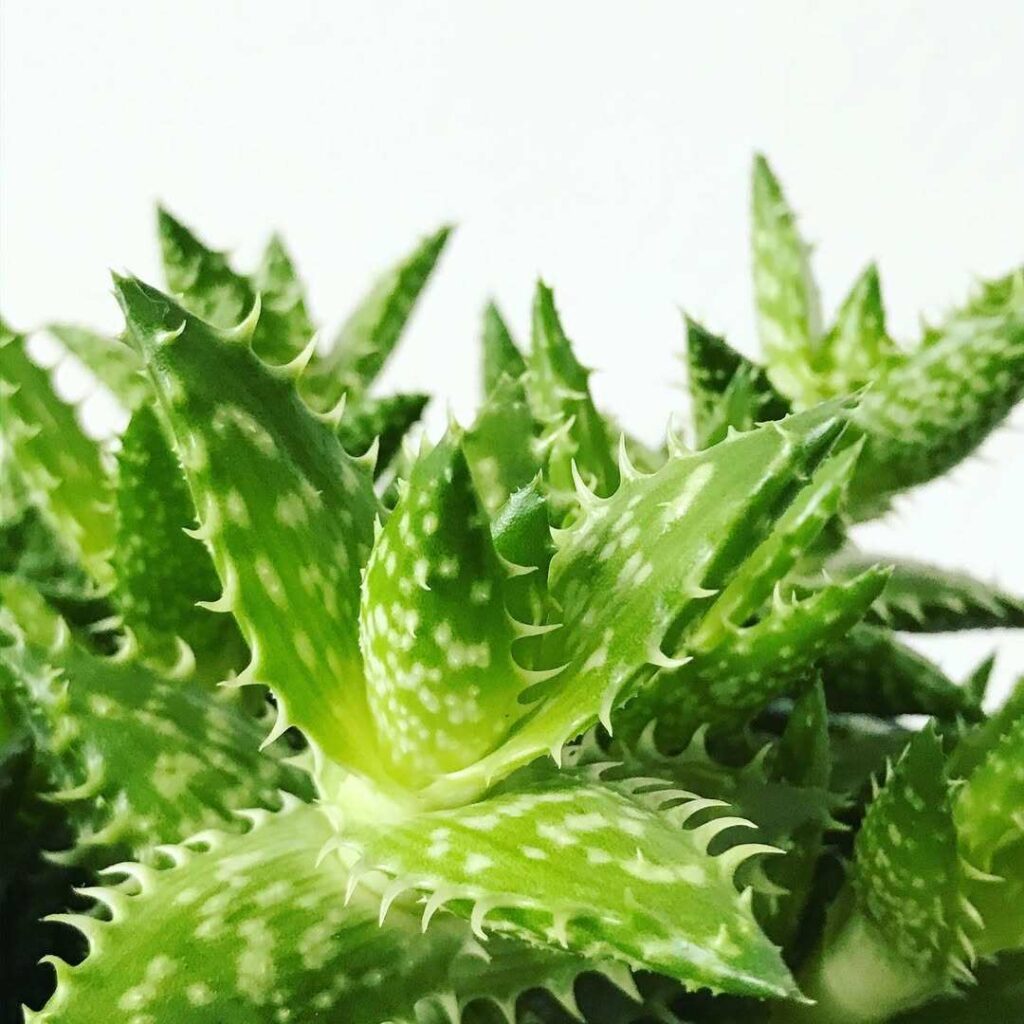Is aloe vera toxic to cats? This is an important question for many pet owners who enjoy growing aloe plants at home. Aloe vera is widely known for its healing properties for humans, but it contains substances that can be harmful if ingested by cats. Understanding the risks and symptoms of aloe poisoning can help you keep your feline companions safe while enjoying this popular succulent.
While aloe vera offers health benefits to people, the plant contains compounds like saponins and anthraquinones that are toxic to cats. If a cat chews on or eats aloe leaves, it may develop symptoms such as vomiting, diarrhea, lethargy, and loss of appetite. Knowing these facts can help you make informed decisions about keeping aloe plants in cat-friendly environments.

The Truth About Aloe Vera and Cats
What Makes Aloe Vera Toxic to Cats?
Aloe vera contains compounds called saponins and anthraquinones, which are the main culprits behind its toxicity to cats. These substances can irritate a cat’s digestive system, leading to adverse reactions if ingested. While the gel inside the leaf is often used safely by humans, the whole plant—especially the latex found just under the skin—poses risks to feline health.
Common Symptoms of Aloe Vera Poisoning in Cats
If your cat ingests aloe vera, watch for warning signs such as:
- Vomiting and diarrhea
- Drooling and oral irritation
- Lethargy and weakness
- Loss of appetite
These symptoms typically appear within a few hours of ingestion. Prompt veterinary care is essential if you suspect aloe ingestion to avoid more serious complications like dehydration or electrolyte imbalance.
Safe Alternatives and Precautions
To protect your pets, consider these steps:
- Keep aloe vera plants out of your cat’s reach or opt for pet-safe plants.
- Educate family members about the risks of aloe vera.
- If you use aloe-based products, ensure they are stored safely and never applied to cats without veterinary advice.
By understanding the toxic components and recognizing symptoms early, you can ensure your cat’s environment remains safe and healthy.
Understanding Aloe Vera’s Toxicity to Cats
What Components Make Aloe Vera Harmful?
Aloe vera contains several chemical compounds that are toxic to cats, primarily saponins and anthraquinones. Saponins are natural detergents that can cause irritation in the digestive tract, while anthraquinones act as laxatives and can lead to severe gastrointestinal distress. The latex, a yellowish substance found beneath the aloe leaf’s skin, contains higher concentrations of these toxins, making it especially dangerous if ingested.
How Cats Are Affected by Aloe Vera
Cats are particularly sensitive to these compounds because their livers metabolize toxins differently than humans. When cats consume aloe, they may experience a range of symptoms such as:
- Vomiting and diarrhea caused by intestinal irritation
- Excessive drooling due to mouth irritation
- Lethargy and weakness from dehydration and toxin absorption
These symptoms can develop quickly, usually within a few hours after ingestion, and may worsen if not treated promptly.
Toxicity Severity and Veterinary Care
The severity of aloe poisoning depends on how much the cat has ingested and the cat’s size and health condition. Mild cases might resolve with supportive care, but severe poisoning can lead to electrolyte imbalances and require immediate veterinary intervention. Pet owners should always seek professional advice if aloe ingestion is suspected, even if symptoms seem mild initially.
Creating a Safe and Cat-Friendly Aloe Vera Environment
Choosing the Right Placement for Your Aloe Vera
To keep your cat safe, it’s crucial to place aloe vera plants where curious paws and mouths can’t reach them. High shelves, hanging planters, or rooms that your cat cannot access are ideal locations. Consider using sturdy pots that are difficult to tip over, as cats often knock over plants out of curiosity or playfulness.
Cat-Safe Alternatives and Plant Management Tips
If you love having greenery but want to avoid risks, consider these options:
- Substitute aloe vera with non-toxic plants like spider plants, Boston ferns, or cat grass, which are safe for cats.
- Use barriers like decorative plant cages or place plants inside terrariums to prevent direct access.
- Regularly inspect your plants for damage or loose leaves that might tempt your cat.
Educating Household Members and Monitoring Behavior
Everyone in your home should be aware that aloe vera can harm cats. Educate children and guests about the risks and encourage them not to allow pets near these plants. Monitor your cat’s behavior closely, especially when introducing new plants, and watch for any signs of chewing or unusual symptoms that might indicate ingestion. This proactive approach ensures a safe environment for both your plants and your feline friends.
Dealing with Aloe Vera Damage Caused by Cats
Common Types of Damage from Cats
Cats are naturally curious and may claw, chew, or dig into aloe vera plants, causing physical damage. This behavior can lead to broken leaves, uprooted plants, and exposure of the toxic latex inside the leaf. Chewed leaves not only ruin the plant’s appearance but also increase the risk of your cat ingesting harmful substances.
Repairing and Protecting Your Aloe Vera Plant
To help your aloe vera recover and prevent further damage:
- Prune damaged leaves: Use clean, sharp scissors to cut away broken or chewed leaves at the base to encourage healthy new growth.
- Re-pot if necessary: If the roots are disturbed, re-pot the plant in fresh, well-draining soil to support recovery.
- Apply deterrents: Use natural cat repellents like citrus peels or diluted vinegar spray around the plant’s base. These scents are unpleasant to cats but safe for aloe.
Behavioral Strategies to Redirect Cat Attention
Redirect your cat’s natural instincts by providing alternative outlets:
- Place scratching posts, catnip toys, or interactive play areas nearby to divert attention from your plants.
- Offer cat grass or other pet-safe plants as an alternative chewing option.
- Consistently discourage plant chewing with gentle training and rewards for appropriate behavior.
By combining plant care and behavioral strategies, you can maintain healthy aloe vera plants and keep your cats safe.
Potting and Soil Tips for Aloe Vera Around Cats
Choosing the Right Pot for Safety and Stability
When growing aloe vera around cats, selecting a sturdy, heavy pot is essential. Heavy ceramic or terracotta pots are ideal because they resist tipping, reducing the chance of your cat knocking over the plant. Avoid lightweight plastic pots, as these are easier for curious cats to tip or dig into, potentially spilling soil and damaging the plant.
Best Soil Mix for Aloe Vera and Cat Safety
Aloe vera thrives in well-draining soil, which prevents root rot and keeps the plant healthy. Use a cactus or succulent potting mix, typically made from:
- Coarse sand
- Perlite or pumice
- Organic compost or peat moss
Avoid soils that contain fertilizers or additives harmful to cats, such as synthetic chemicals or certain bark mulches. Opt for natural, non-toxic soil components to minimize risks if your cat decides to nibble or dig.
Tips to Discourage Cats from Digging in Soil
Cats may be attracted to loose soil as a litter substitute or play material. To deter digging:
- Add a top layer of decorative stones or pine cones to cover the soil surface.
- Place aluminum foil or plastic mesh lightly on top of the soil (ensure it is safe and not easily ingested).
- Use pet-safe deterrent sprays around the pot’s base.
These measures help protect your aloe vera and keep your cats away from soil without harmful chemicals.
Watering and Light Considerations for Cat-Safe Aloe Vera
Proper Watering Practices for Healthy Aloe Vera
Aloe vera is a succulent that requires minimal watering to thrive. Overwatering can lead to root rot, which weakens the plant and may attract your cat’s curiosity. Water your aloe vera deeply but infrequently—generally once every 3 weeks or when the soil is completely dry. Ensure the pot has drainage holes to prevent water from pooling at the bottom, reducing the risk of fungal issues that might harm both the plant and your cat.
Ideal Light Conditions to Keep Aloe Vera Robust
Aloe vera thrives in bright, indirect sunlight. Position your plant near a south or west-facing window where it can receive about 6 to 8 hours of filtered light daily. Avoid direct, harsh sunlight that can scorch the leaves, causing them to become brittle and more likely to break, which could expose toxic latex inside. Balanced lighting keeps the plant healthy and less appealing for your cat to nibble.
Creating a Safe Environment with Light and Water
- Use grow lights in rooms with limited natural light to maintain aloe vera’s health without overexposure.
- Rotate the plant occasionally to ensure even light distribution and prevent leaning, which can cause instability around pets.
- Avoid leaving standing water in trays or saucers under the pot, as this can attract cats and promote mold growth.
By carefully managing watering and light, you ensure your aloe vera remains healthy and less hazardous to your feline friends.
Decorating Your Home with Safe Aloe Vera Plants
Selecting Pet-Safe Aloe Vera Varieties
While the common Aloe vera (Aloe barbadensis miller) is toxic to cats, some succulent plants offer similar aesthetics without the risk. Consider pet-safe alternatives such as Haworthia, Gasteria, or certain varieties of Echeveria. These plants provide a similar spiky, architectural look to aloe but do not contain harmful compounds, making them ideal for homes with cats.
Creative Placement and Display Ideas
To enjoy aloe vera safely indoors, thoughtful placement is key:
- Use elevated shelves or hanging planters out of your cat’s reach.
- Incorporate aloe vera into terrariums or glass cloches to create decorative mini-gardens that protect both plant and pet.
- Pair aloe plants with other non-toxic greenery in decorative pots to enhance visual appeal while minimizing risks.
Stylish and Safe Containers for Aloe Vera
Choosing the right container adds both style and safety:
- Opt for heavy ceramic or stone pots that provide stability and reduce the chance of being knocked over by pets.
- Consider pots with narrow openings or built-in protective barriers to discourage cats from chewing leaves.
- Use decorative rocks or moss to cover soil surfaces, preventing cats from digging and adding an attractive finish.
By combining smart plant choices, strategic placement, and stylish containers, you can decorate your home beautifully while keeping your cats safe from aloe vera toxicity.
Integrating Aloe Vera into Your Cat-Friendly Space
Balancing Plant Care and Pet Safety
Integrating aloe vera into a home with cats requires thoughtful planning to protect both your plant and your feline friends. Start by selecting safe locations that are easily visible for you but out of your cat’s reach. This might include high shelves, window ledges, or enclosed plant stands. Ensuring the plant remains healthy and undisturbed reduces the chance your cat will be tempted to nibble or paw at it.
Creating Barriers and Protective Zones
Physical barriers are an effective way to integrate aloe vera safely. Consider:
- Decorative cages or wire plant guards that allow air and light but prevent direct contact.
- Placing the aloe inside glass terrariums or cloches to create a mini-greenhouse effect that keeps curious cats away.
- Using double-sided tape or pet-safe deterrent mats around the plant’s base to discourage approach.
These barriers create a clear “no-go” zone without compromising the plant’s growth or your home’s aesthetic.
Enriching Your Cat’s Environment Elsewhere
To prevent your cat from targeting aloe vera, enrich their environment with alternative stimulation:
- Provide safe cat plants like catnip, cat grass, or cat thyme to satisfy chewing urges.
- Offer interactive toys and climbing structures to keep them engaged and distracted.
- Rotate toys and plants regularly to maintain your cat’s interest in safe options.
By combining strategic placement, protective barriers, and enriching your cat’s surroundings, you can enjoy aloe vera safely in a cat-friendly home.
Conclusion
Aloe vera can be toxic to cats due to compounds like saponins and anthraquinones, which may cause vomiting, diarrhea, and lethargy if ingested. Pet owners should keep aloe plants out of reach or opt for safer alternatives to protect their feline friends. Proper plant placement, sturdy pots, and behavioral strategies can help prevent accidental ingestion and damage. By understanding the risks and taking simple precautions, you can enjoy aloe vera’s benefits while ensuring a safe environment for your beloved cats.

I’m Shofi, a passionate gardener and blogger. I have 10+ years of experience in gardening and hold certifications in horticulture and garden design. I share my knowledge and skills through my garden blog to inspire and educate others on the joys of gardening. I try to provide valuable information and create a community for gardeners of all levels to connect and learn. My ultimate goal is to inspire others to start their own gardens and connect with nature.

